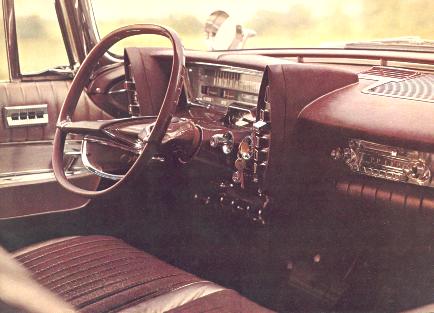 |
 |
Imperial Home Page -> Literature -> Articles -> 1962 Angove article
ADVERTISING for the 1962 Imperials must have been effective, since sales increased considerably over 1961. In fact, they were higher than any year since watershed 1957, when Imperial sent its competition scrambling back to the design studios with its "suddenly it's 1960!" styling. The panic at the competition was short lived, though. 1958 was a bad sales year for the automobile industry in general, and an awful year for Imperial. Too bad for the Imperial, generally it was preferred over its competition for handling ability, maneuverability, and always scored high marks in the "fun to drive" category by the automotive journalists of the time.
Imperial's advertising campaign for 1962 was directed at the top professionals in America. It invited them to accept the offer to have a new Imperial delivered to them for a test drive. The black and white ads generally ran in National Geographic and other appropriate magazines. Some of the ads were directed specifically to Doctors or Attorneys, and admonished that if somehow your invitation missed you, just write to the General Manager of the Imperial Division (on your letterhead).
It's curious that Imperial's advertising consisted of mostly black and white photography during this time. Even lesser cars were using color photography, and virtually all of Imperial's competition used color. Cadillac utilized beautifully illustrated ads with very little copy. Prominent in Cadillac ads were beautifully jeweled Cadillac "V"'s and crests. Always designed by one of the top jewelers, such as Harry Winston or Van Cleef and Arpels. Lincoln was riding the wave of success brought in by its 1961 models, certainly one of the great automotive designs of all time. The lines of this car were very clean and uncluttered, due largely to designer Elwood Engel. Engel was about to play a big part in the Imperial's design, but not for 1962.
For 1962, Imperial finally shed the finned look it had helped start with the 1957 models. By 1961, most other makes had abandoned the huge fins of previous years, promoting a less flashy look for the sixties. Cadillac is generally considered to have propelled the fins to their biggest heights with its 1959 models, a burden that Imperial (thankfully) didn't have to bear. But by the time 1961 rolled around, the finned look had run its course, leaving Imperial alone in the fine car field with its appendages. Cadillac still had fins, but they had retreated into the rear quarter panel considerably at this point. Lincoln had a semblance of fins from the rear, but not from the side view.
The 1962 Imperial had an athletic look, the new lower rear quarters made the car seem somehow more balanced, a bit longer (it wasn't). A contemporary test drive report indicated that the Imperial seemed to attract attention, which did not happen when other luxury makes were being tested. Was it Imperial's stately appearance? Was it the fact that this car was capable of accelerating at a rate faster than expected? Perhaps. But maybe the looks were just because it was an Imperial.
There's a scene in the movie It's A Mad, Mad, Mad, Mad World (1962) where Ethel Merman has the privilege of being a passenger in a Dawn Blue 1962 Imperial Convertible. During this scene, the Imperial is among a group of lesser vehicles racing to the same destination. At one point Miss Merman commented, "We're the ones with the Imperial and we're running LAST?!?!"
Perhaps Ethel Merman understood the Imperial: the car which handles and accelerates and thrills as a great car is supposed to.Below: 1961 Imperial Crown instrument panel shown in Cocoa

This page was last updated October 19, 2003. Send us your feedback, and come join the Imperial Mailing List - Online Car Club